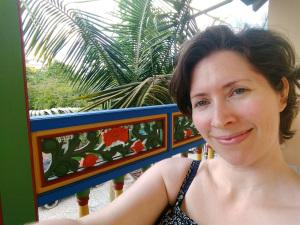 In the first half of this year I hosted fewer Writers on Location posts than usual but we’re making up for that now with Linda Mannheim’s American “Happy Valley” last week and today’s guided tour of Colombia’s capital city in the company of Helen Young (and another next week, see postscript). Helen’s second novel Breakfast in Bogotá, one of my Autumn Sofa Spotlight titles, was crowdfunded through Unbound, who bring many interesting and ‘different’ books into being. As a supporter I was pleased to see Helen’s campaign succeed but more importantly, very impressed when I read it. Find out why in my review at the end.
In the first half of this year I hosted fewer Writers on Location posts than usual but we’re making up for that now with Linda Mannheim’s American “Happy Valley” last week and today’s guided tour of Colombia’s capital city in the company of Helen Young (and another next week, see postscript). Helen’s second novel Breakfast in Bogotá, one of my Autumn Sofa Spotlight titles, was crowdfunded through Unbound, who bring many interesting and ‘different’ books into being. As a supporter I was pleased to see Helen’s campaign succeed but more importantly, very impressed when I read it. Find out why in my review at the end.
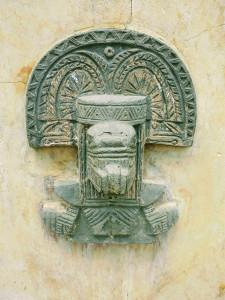
La Candelaria
At some point in your wanderings around the city you will be drawn like a magnet to the historic old town district of La Candelaria. Here is where the city foundations were first laid by the Spanish in the 1500s. Now, within walking distance you’ll find a fantastic museum dedicated to artist Botero, the national opera house and the gold museum; three floors containing thousands of pre-Colombian artefacts in staggering levels of preservation. Down many of the side streets that spill onto the main square, Plaza de Bolívar, there are also local cafes from which to try Ajiaco, a creamy chicken and cassava soup served in a giant earthenware bowl.
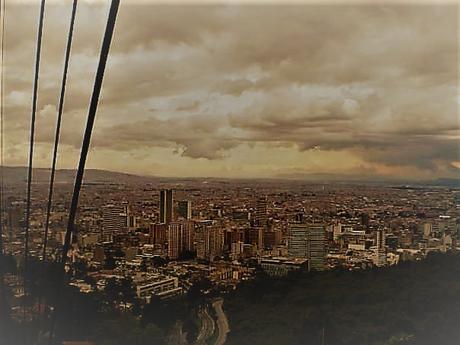
Bogotá is embraced on one side by a steep Andean incline. Sacred since the time of the indigenous Muisca people, from La Candelaria you can take the funicular up Monserrate to the church at its peak. It’s a wonderfully peaceful place, high above the chaos of the modern city with spectacular views of downtown Bogotá and beyond. Up here, you can buy fresh baked almojábana (cheese and corn baked rolls) and avena (an oatmeal smoothie) to enjoy on the church steps alongside that view.
The House of Gaitán
In what was once an upmarket suburb of the city, sits the house of the former liberal leader, Jorge Eliécer Gaitán. This should be on your list because it is so well preserved. The remaining members of the family had to flee after Gaitán’s tragic assassinated in 1948 on the streets of the capital – a moment I’ve marked in my novel. It isn’t somewhere many overseas tourists head, but wandering the rooms of this large 1930s house, past the former visionary’s suits, shoes and many bookshelves (over three thousand of his books are still here), you’re as close as you’ll ever get to the great man himself.
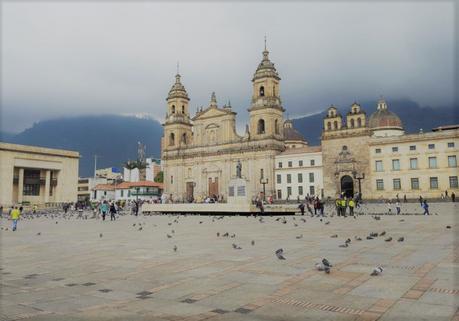
This is new. Ha! I hear you exclaim, but really, it’s true. Artisan coffee has made a huge comeback in recent years in the city, with small-batch farms selling to entrepreneurial young Bogotanos with a passion for homegrown coffee. Café Usaquén in the historic district of Usaquén, seeks out the very best coffee to serve. There was a time, in the 1940s, when the city sang with conversation, laughter and debate, spilling out of the hundreds of popular coffee shops spread across the capital. As a young journalist in the city, Gabriel García Márquez, writes about it in his autobiography, Living to Tell the Tale. Sadly, in the years that followed Gaitán’s assassination and in the civil war that followed, this casual social occupation was all but forgotten. Now it’s back and the local coffee machines can be heard singing once more.
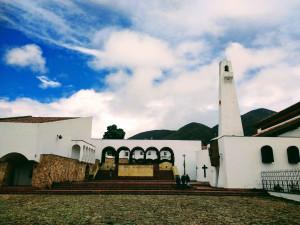
Once a bit of a trek outside of the city, the sacred site of Lake Guatavita can now be reached in around an hour from Bogotá. Guatavita was sacred to the Muisca people and is where the legend of El Dorado comes from. Since the 1500s, various European visitors have blown a hole in its side with a view to extricating salt from the mineral rich land, as well as almost decimating indigenous plant life in order to eradicate native customs for future generations. Despite this, the lake and its surrounding have survived and are now a protected ecological park. Your Muisca guide will lead you up hill above the lake itself to one of the most spectacular and sacred views around.
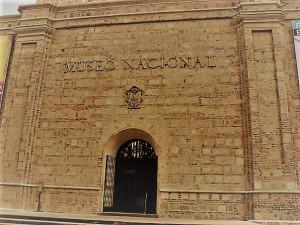
I will always be an outsider in Bogotá; a tourist constantly awestruck at the way things are done in this crazy, chaotic rush of a place, so very unlike my upbringing on a suburban council estate in Swindon, Wiltshire. The research which went into this book, taking me back to the Bogotá of the 1940s, has made me a better informed outsider at least. It’s given me new respect for the city and its pavements. I can see the older town beneath the shiny new metropolis. Most visitors don’t linger long in the capital, preferring to head elsewhere in this beautiful wild country, and who can blame them? But, I’ve found, researching the book has made me into the kind of outsider who pauses and considers what came before.
Thanks to Helen for this enticing piece in the style of a guidebook – I bet I’m not the only coffee and travel afficionada tempted to experience breakfast in Bogotá for myself!
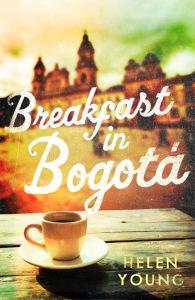
The opening chapter of this novel is an arresting and assured piece of writing which instantly sets the tone for a layered narrative fusing love story and political drama, laced with conflict of all kinds. Architect and protagonist Luke is a fascinating and complex character, attractive and well-intentioned but flawed, and scarred by regret; I became genuinely immersed in his desires and dilemmas. Some years ago I was surprised to hear a best-selling author describe redemption as ‘a bit of a clichéd theme’ – my view on this or any other subject is that it entirely depends how you approach it (redemption’s not exactly an easy one to avoid), and here it’s handled well. The set-up of the novel and Luke’s unusual perspective as an outsider who nonetheless finds himself at the epicentre of the country’s turbulent events felt fresh and strangely topical, portraying the abuse of power and contempt for the lives of ordinary people.
The depth of the author’s curiosity and understanding of this city (for all her modesty, she knows it well) comes across in light, delicate touches and unflinching depictions of brutality and machismo. Whilst at times this comes close to heaping too much on the reader – and one character in particular – the overall result is a sophisticated examination of loyalty and conscience with a vibrant sense of place and time. It’s good news for anyone who enjoys literary fiction, historical or not, that this novel found its way to readers.
*POSTSCRIPT*
Next week will make it three fabulous Writers on Location posts in a row here on the Sofa. Dominic Brownlow takes us to the wild, flat landscape of the Fens, setting of his haunting literary debut The Naseby Horses from independent publisher Louise Walters Books.

